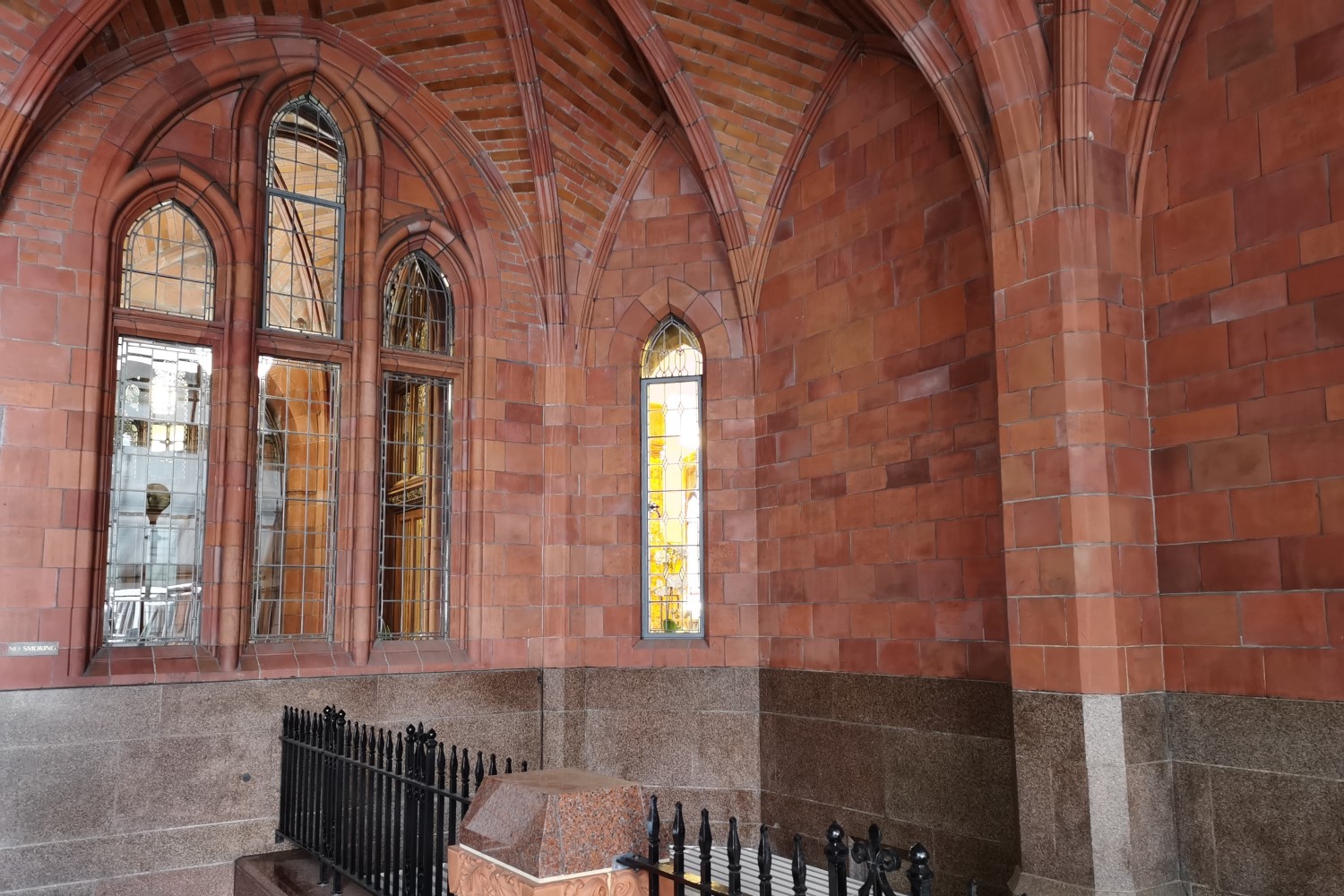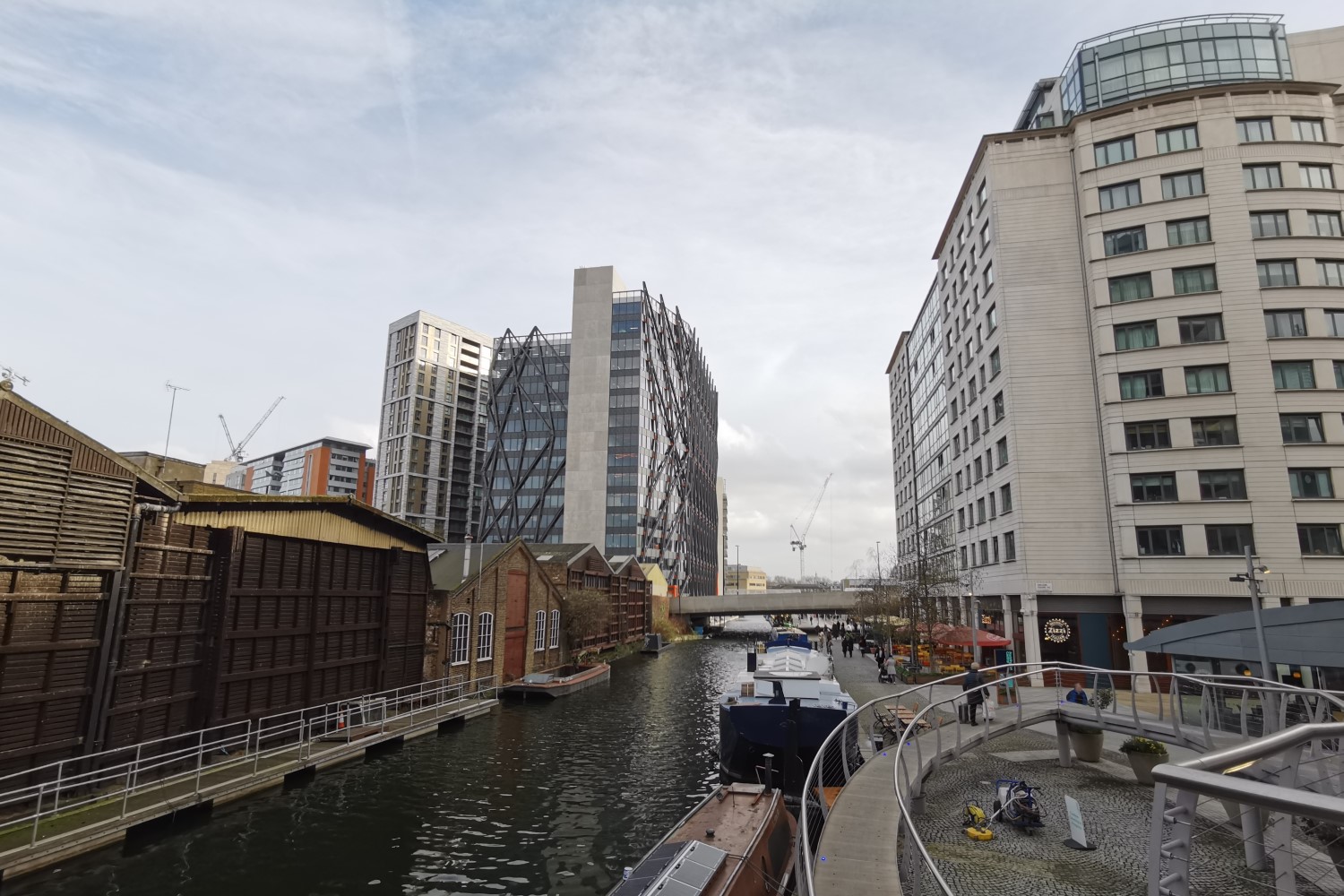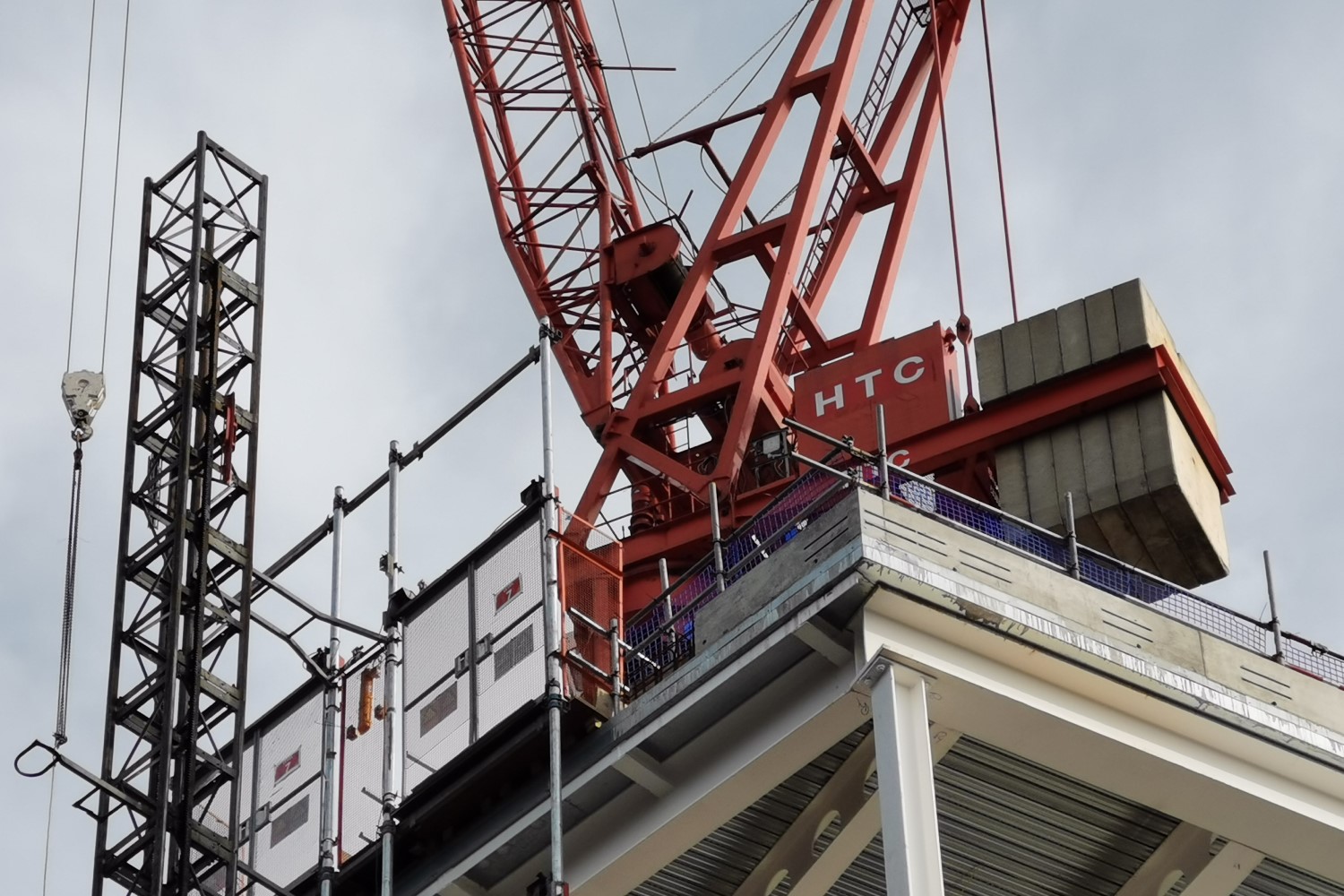The folding smartphone hasn’t quite delivered on its promise yet. Whether it’s compromised designs or dubious durability, the folding smartphone’s rocky start hasn’t fulfilled our sci-fi mobile dream yet. But we’re getting closer, and the new Huawei Mate Xs edges nearer to our folding dreams than any model before it.

Why? Because it’s both a full-size smartphone and a true tablet, all in one, that you can feasibly use every day. Amazingly, outside of the original Huawei Mate X which only went on sale in China, this just hasn’t happened yet. I spent an afternoon with the Mate Xs to see how it fitted in with my life, and if it really, finally, delivered on that early folding smartphone promise.
Incognito rules

There’s nothing subtle about the Samsung Galaxy Fold. When you unfold it on the train, or out in public, people notice. Most of the time that’s fine, but I have felt very self-conscious doing so in places I’m unfamiliar with, in case someone takes a fancy to the $2,000 smartphone in my hand.
The thing is, you have to unfold it to do anything meaningful because the outside screen is too small and fiddly. The Huawei Mate Xs is the perfect incognito folding smartphone because it looks and operates exactly like any other regular phone when it’s folded up, and therefore remains stealthy and 100% usable, all the time.
This isn’t a surprise, as the overall design hasn’t changed from the original Mate X, but until we start using these phones every day, it’s difficult to understand how they fit into daily life. The exterior doesn’t look different, but Huawei has been busy refining two of the most important hardware aspects: the screen and the hinge.
The hinge looks the same at first glance, but there are two small covers over the top and bottom of the assembly, presumably protecting it from anything nasty getting inside. The most striking alteration is how the phone folds. The action is still solid, but the resistance has been adjusted. It used to be a little too stiff, but now it’s just right.

It’s not going to fold or unfold by accident either. You press a button on the back to spring the screen out, and it locks into place open or closed with a satisfying click. You “break” the lock by bending the phone back the other way, and the screen curls around the leading edge of the device, going from an 8-inch tablet to a 6.6-inch smartphone.
The screen turns black down the side giving the impression it’s a single screen on the front, and I never experienced any “phantom” touches in smartphone mode. Where the screen bends around, there is some screen flex around the curve, which isn’t noticeable until you press down. It gives reassurance the big flexible screen is not under extreme tension or ready to snap.
Huawei has upgraded the four polyamide film layers that make up the screen to be even more durable without sacrificing the beauty of the flexible OLED display underneath. It’s an essential change, as the folded up Mate Xs has its screen — which isn’t covered in glass — completely exposed to the elements.
In my time with the phone, I treated it like any other. It went in and out of my pocket, in my bag, on tables, and on various surfaces for photos. It did manage to pick up one small scratch, which was almost certainly from surface grit during photographing the phone and could very well have scratched a glass screen too. My Galaxy Fold’s screen picked up barely noticeable micro-scratches within a few days.
While the screen durability seems solid, and the build quality excellent as you’d expect, I’d still try to keep the Mate Xs in the leather pouch that comes in the box. If you’re going to treat an expensive phone like trash, it’ll get damaged. Treat it nicely, and it’ll be fine.
5G and performance

The Mate Xs uses the 5G Kirin 990. This is special because the 5G modem is integrated into it rather than placed separately, and in my afternoon with the phone, this seemed to make a sizeable difference.
For a start, the 5G reception was better than my 5G Samsung Galaxy Fold, and more stable too, avoiding some of the disconnection problems I’ve seen on the Fold when it switches between 4G, 5G, and Wi-Fi. The speeds I measured were consistent at around 150Mbps to 180Mbps on the EE network in London.
Video is spectacular on the Mate Xs. The screen isn’t overly reflective, the colors are bright and vivid, and of course, when unfolded you get the size of a tablet on the move too. It’s also completely flat in this mode, improving viewing even further, plus because the screen is still full-size when folded up, video still looks great. Try saying this about the Galaxy Fold or Galaxy Z Flip.
Because the unfolded Mate Xs isn’t usable with one hand, the fact it works well folded is a benefit, as I could use it on the train while standing up and holding on to the rail. Scrubbing back and forth in a 1080p YouTube video showed almost no buffering when connected to a 5G signal, and browsing the web was very fast too.
Huawei has worked hard on the cooling inside the Mate Xs. This is another crucial part of its development, as heat will kill performance. A dual-section cooling system has been engineered across both the phone’s sections, and then bridged using a flexible connector over the hinge to make sure high temperatures don’t become a problem.
The 4,500mAh battery is also split either side of the hinge and supports 55W charging to gain 85% capacity in just 30 minutes.
Software and multi-tasking

I used a Mate Xs with EMUI 10 and Android 10 installed. The UI feels much more mature compared to the Mate X and operated without fault during my time. It felt as smooth and reliable as EMUI 10 on my Huawei Mate 30 Pro.
How about the smoothness of the screen itself? Sliding my finger across didn’t reveal the same lumps and bumps I disliked about the Mate X. You can still feel the crease down the middle, and it’s about the same as the Galaxy Fold. Visually you don’t notice it looking at the phone straight on.
Multi-tasking is a key part of big-screen folding smartphones, and Huawei has integrated it well here. A slide-in bar shows apps that can be run in multi-screen and you drag and drop them into place. Two run side-by-side on the screen, and a third floats over the top. It’s elegant, useful, and fast.
I use multi-tasking a lot more on the Galaxy Fold than any other phone, and it’s great to see a robust, useful system here too. However, it’s not clear which third-party apps support the system, although Huawei says there are already 1,000 that do.
The Mate Xs will not come with Google Mobile Services, and instead has the Huawei App Gallery as standard. I installed the Amazon App Store to get apps like Twitter and Instagram, while Snapchat (if that’s your thing) is available in the App Gallery. The browser is made to adapt to the Mate Xs’s folding screen, but alternative browsers like Opera don’t work as well, and default to a frustrating mobile-only view. I used YouTube through the browser. No, it’s not ideal, but I’d be prepared to make a few changes to use the Mate Xs every day.
To get some of the missing Google apps on the Mate 30 Pro I used the Phone Clone software to transfer them over from an old device. There is no reason why this won’t work on the Mate Xs too. I did not get a chance to use dozens of apps to test compatibility with the Mate Xs’s unfolded screen, but in the same way that Huawei is working on bolstering the App Gallery’s line-up, it’s also working with developers to ensure apps work correctly on the phone.
Holding, and taking photos with the Huawei Mate Xs

The Mate Xs’s camera takes the best aspects from the Huawei P30 Pro and the Mate 30 Pro, and then makes them usable all the time for main photos and for selfies. It has a 40-megapixel main lens, a 16-megapixel ultra-wide lens, and an 8-megapixel telephoto, plus a 3D depth sensor too. There are no real surprises in the app, but the use of the multiple screens is clever. You take selfies using the “rear” screen when folded up (the app prompts you to turn the phone around when you hit the selfie button), or it can be used as a mirror when taking a photo of someone else, so they can see position and expression. Very useful.
Huawei’s Mate 30 Pro and P30 Pro are two of my favorite camera phones, and I had no complaints at all with the Mate Xs, which took very good photos. When you use the camera with the phone folded up, it feels the same as every other phone out there. The Galaxy Fold’s camera is good too, but the phone feels heavy, thick, and ungainly when shooting one-handed with the phone closed.
Although the Mate Xs weighs almost 300 grams, the 5.5mm thickness unfolded along with the grab handle that runs down one side makes this heft disappear, and taking photos one-handed open is fine. Folded up, the rounded sides make the phone nestle pleasingly in your palm, and the lack of exposed hinge fools your brain into thinking it’s just a regular phone.
A true folding smartphone
I’d call the Samsung Galaxy Fold a folding tablet, while the Motorola Razr and Galaxy Z Flip cater to those who want the benefits of a big phone, without actually carrying a large phone around. That’s fine, but that’s a different crowd to those eyeing up the Mate Xs. The Huawei Mate Xs delivers something different — a normal phone that fits in your pocket and folds out into a tablet when you want it, without any major design compromises.
You’re going to compromise on the software, but you already knew that. Hopefully, this will change, as Huawei is not going to roll over and let this be a long-term problem. It has the resources and reach to make the App Gallery a worthy alternative to the Google Play Store — it just needs time. Whether you are happy to drop the money on the Mate Xs right now depends on your Google app dependency. The other compromise is uncertainty regarding long-term durability. It is currently an unknown how the screen — regardless of Huawei’s efforts to reduce scratching — will look after 12 months, and will likely depend on how you treat the phone generally.
The Huawei Mate Xs is a normal phone that fits in your pocket and folds out into a tablet when you want it.
What isn’t in doubt is how well-engineered the Huawei Mate Xs feels. How much more final than the Mate X it is, from the software to the hinge action. It’s still early days for the folding smartphone in general, but the evolutionary leap between the Mate X to the Galaxy Fold, and now to the Mate Xs is clear, and Huawei’s folding phone unquestionably represents the pinnacle of the genre at the moment. The price and release date of the Mate Xs was announced during the phone’s launch on February 24. It will be sold globally, and it will start at 2,300 euro/$2,700, which is the same approximate price of the original.
The Huawei Mate Xs is the phone that will turn non-believers into folding smartphone converts because it gets everything we wanted exactly right. I gave the Mate Xs back to Huawei at the end of my afternoon, but with more than a little regret. Next time I’m lucky enough to get my hands on one, they may have a harder time taking it away.
Editors' Recommendations
- Is this our first look at the OnePlus Fold? I sure hope so
- I used a phone that’s the opposite of the Galaxy Z Fold 4, and I want more
- Huawei’s Mate series to return with the Mate 50 next month
- Huawei’s MatePad Paper is an E Ink-equipped Kindle rival
- Wedge-shaped MateBook X Pro headlines Huawei’s MWC lineup











